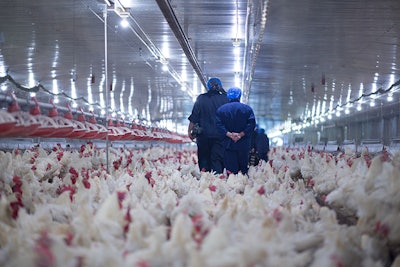
Avian reoviruses are a costly challenge for poultry producers, leading to lameness in broilers, increased culling and mortality and low rates of weight gain and poor feed efficiency.
“Reoviruses have been recognized since 1967 and are present in all major broiler chickens produced in North America. For many decades, we had controlled the disease through vaccination with a single serotype known as S1133. However, the disease reemerged around 2011 with the emergence of antigenic variants,” Dr. Milos Markis, vice president of AviServe, explained September 29 during the Delmarva Poultry Industry (DPI) 55th National Meeting on Poultry Health, Processing, and Live Production.
“There are several diseases associated with reovirus infection. Arthritis and tenosynovitis have been described in both chickens and turkeys and are considered to be the most economically significant forms of the reovirus.”
Diagnosis
Reoviruses can cause a range of health problems in poultry, affecting the heart, liver, spleen and lymphoid tissues and can cause immunosuppression similar to infectious bursal disease.
“Diagnosis is typically done through clinical presentation of lesions and confirmation through histal pathology. We can detect reoviruses through PCR or viruses can be isolated in cell culture,” Markis added.
Management
Vaccination is currently the best management strategy for managing the spread of avian reoviruses. Researchers are currently working on finding ways to develop better autogenous vaccines.
“Occasionally, repeat spawns can be sanitized, but ultimately, the only reliable strategy we have is vaccination of breeders pullets with autogenous vaccines. These vaccines can mute vertical transmission from infected breeders and also provide progeny with maternal antibodies to protect them in their first two weeks of life,” said Markis.
Control
Carefully-planned biosecurity measures are the best want to control avian reoviruses in poultry flocks.
“Some control measures include biosecurity, such as limited distribution of eggs and chicks from infected breeder flocks and limiting moves of outside eggs that may not be coming from vaccinated breeders. Hatchery transmission is possible. When chicks are hatched from different sources in the same incubators, the reovirus can vertically transmit among those birds,” Markis said.
Like what you just read? Sign up now for free to receive the Poultry Future Newsletter.

















